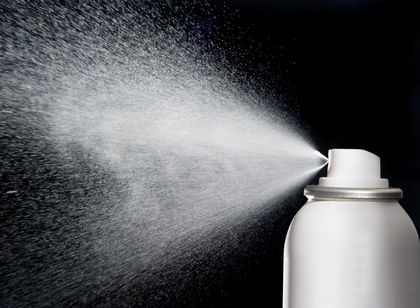GAS LAWS

Gases respond more dramatically to temperature and pressure than do the other three basic types of matter (liquids, solids and plasma). For gases, temperature and pressure are closely related to volume, and this allows us to predict their behavior under certain conditions. These predictions can explain mundane occurrences, such as the fact that an open can of soda will soon lose its fizz, but they also apply to more dramatic, life-and-death situations.
Ordinary air pressure at sea level is equal to 14.7 pounds per square inch, a quantity referred to as an atmosphere (atm). Because a pound is a unit of force and a kilogram a unit of mass, the metric equivalent is more complex in derivation. A newton (N), or 0.2248 pounds, is the metric unit of force, and a pascal (Pa)—1 newton per square meter—the unit of pressure. Hence, an atmosphere, expressed in metric terms, is 1.013 × 10 5 Pa.